What did gingerich name the ancestral whale he found information
Home » Background » What did gingerich name the ancestral whale he found informationYour What did gingerich name the ancestral whale he found images are available. What did gingerich name the ancestral whale he found are a topic that is being searched for and liked by netizens today. You can Download the What did gingerich name the ancestral whale he found files here. Get all royalty-free photos and vectors.
If you’re looking for what did gingerich name the ancestral whale he found pictures information related to the what did gingerich name the ancestral whale he found topic, you have visit the ideal blog. Our website frequently provides you with hints for viewing the highest quality video and picture content, please kindly surf and locate more enlightening video articles and graphics that fit your interests.
What Did Gingerich Name The Ancestral Whale He Found. Instead they reach for an imaginary not-yet-found ancestor and the precise animal that fills this slot depends on which museum you visit. The final tally came to 379 whales. He found some with hipbones but Gingerich also hoped to find legs and feet. Gingerich thus concluded that the animal which he named Pakicetus was a very primitive whalea land-dwelling mammal that nevertheless spent a lot of time in the water.
 Ppt Whale Evolution Powerpoint Presentation Free Download Id 6625381 From slideserve.com
Ppt Whale Evolution Powerpoint Presentation Free Download Id 6625381 From slideserve.com
Dorudon lacked the elongated vertebrae of Basilosaurus. This came from the flank of the Rodho bald part of the Zinda Pir anticlinorium on the east side of the Sulaiman Range. The next in the line-up is Pakicetus. 10 million years 100 million years 500 million years 1 billion years Question 5. Which he did from 1869to1871. Gingerich argues that Protocetus was completely aquatic and that its lumbocaudal trunk was flexible like that of modern whales.
Gingerich discovered this creature and named it the whale of Pakistan claiming it was the oldest and most primitive whale yet discovered.
Gingerich named the creature Pakicetus pack-eh-SEA-tus Whale of Pakistan. The first whales known as protocetids did not fully embrace their new ocean habitat. The lowerjaw the pelvis the entire skeleton the skull. In 1989 Gingerich was. Teeth as a replacement name. On a series of visits starting in 1983 Gingerich and his team found virtually a whale a day.
 Source: slideserve.com
Source: slideserve.com
Sinonyx Pakicetus Ambulocetus none of the above Question 4 1 1 pts According to the fossil record how long did the transition from fully terrestrial to fully aquatic whales take. He said it is the oldest and most primitive whale yet discovered. Phil Gingerich whale paleontologist University of Michigan named this fossil which means whale of Pakistan because he found the bones in Pakistan and cetus is Latin for whale. Dorudon was a contemporary of Basilosaurus in the late Eocene about 40 million years ago and probably represents the group most likely to be ancestral to modern whales Gingerich 1994. The final tally came to 379 whales.
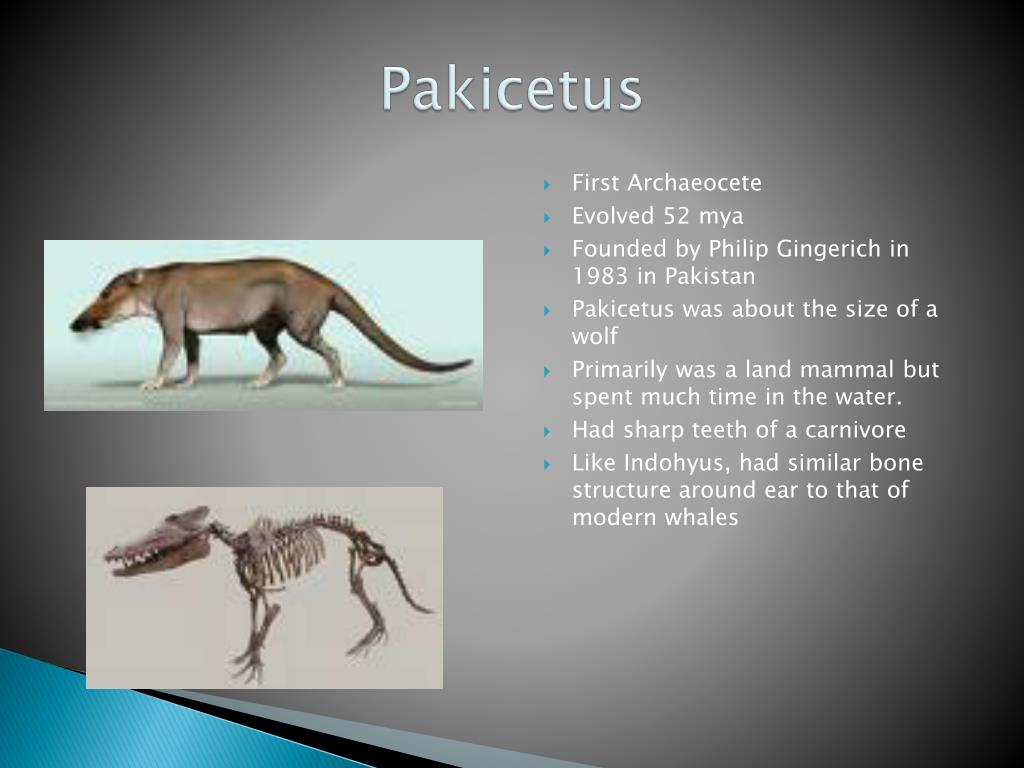 Source: slideserve.com
Source: slideserve.com
Gingerich discovered this creature and named it the whale of Pakistan claiming it was the oldest and most primitive whale yet discovered. Egypt was especially rich in whales. This came from the flank of the Rodho bald part of the Zinda Pir anticlinorium on the east side of the Sulaiman Range. On a series of visits starting in 1983 Gingerich and his team found virtually a whale a day. Based on the land mammal-like features of the skull Gingerich hypothesized that this whale probably went into the water to Philip Gingerich searches for ancient.
 Source: researchgate.net
Source: researchgate.net
Which he did from 1869to1871. It was a link to whales on land ancestry. This came from the flank of the Rodho bald part of the Zinda Pir anticlinorium on the east side of the Sulaiman Range. The first whales known as protocetids did not fully embrace their new ocean habitat. He found some with hipbones but Gingerich also hoped to find legs and feet.
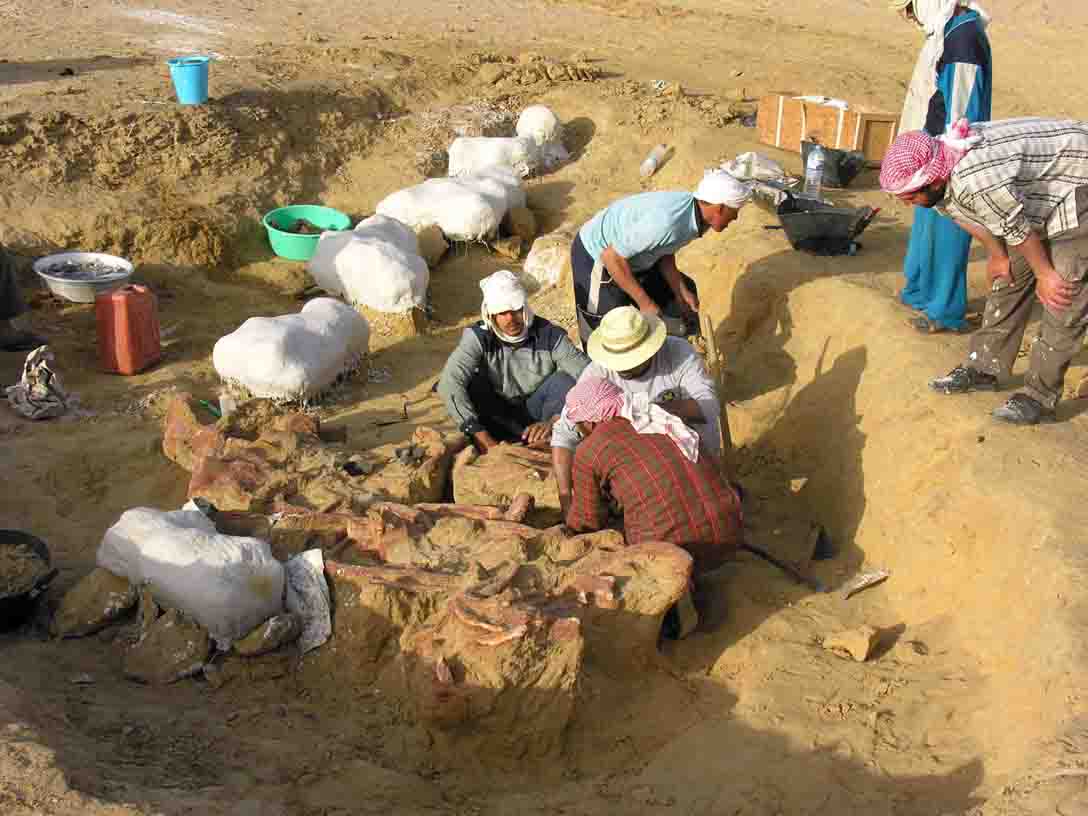 Source: www-personal.umich.edu
Source: www-personal.umich.edu
Our first important find when we returned to Pakistan in the 1990s was an unusually complete skeleton that we named Rodhocetus kasranii Gingerich et al 1994. In time and in its morphology Gingerich reported Pakicetus is perfectly intermediate a missing link between earlier land mammals and later full-fledged whales. This came from the flank of the Rodho bald part of the Zinda Pir anticlinorium on the east side of the Sulaiman Range. They probably stuck close to shore and made occasional trips back to the land Gingerich says. 10 million years 100 million years 500 million years 1 billion years Question 5.
 Source: researchgate.net
Source: researchgate.net
The final tally came to 379 whales. Our first important find when we returned to Pakistan in the 1990s was an unusually complete skeleton that we named Rodhocetus kasranii Gingerich et al 1994. Dorudon lacked the elongated vertebrae of Basilosaurus. It lived about 485 million years ago. It was a link to whales on land ancestry.
 Source: pinterest.com
Source: pinterest.com
Our first important find when we returned to Pakistan in the 1990s was an unusually complete skeleton that we named Rodhocetus kasranii Gingerich et al 1994. On the PBS program Phillip Gingrich explained how he found the first Pakicetus skull 30 years ago. Gingerich argues that Protocetus was completely aquatic and that its lumbocaudal trunk was flexible like that of modern whales. This came from the flank of the Rodho bald part of the Zinda Pir anticlinorium on the east side of the Sulaiman Range. Which he did from 1869to1871.
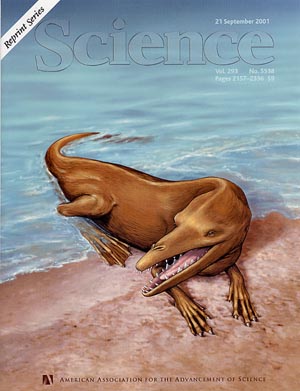 Source: www-personal.umich.edu
Source: www-personal.umich.edu
Gingerich originally believed his fossil belonged to what creature. The next in the line-up is Pakicetus. It lived about 485 million years ago. The lowerjaw the pelvis the entire skeleton the skull. Which he did from 1869to1871.
 Source: slideplayer.com
Source: slideplayer.com
Question 3 1 1 pts What did Gingerich name the ancestral whale he found. Which he did from 1869to1871. He found some with hipbones but Gingerich also hoped to find legs and feet. Sinonyx Pakicetus Ambulocetus none of the above Question 10 1 1 pts How much of Pakicetus has actually been found. Question 3 1 1 pts What did Gingerich name the ancestral whale he found.
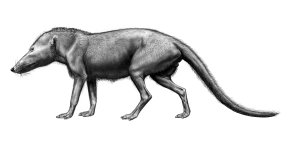 Source: www2.hawaii.edu
Source: www2.hawaii.edu
Fossils are organized by ____similarities. Living or extinct that have ear bones thickened this way are the whales. Which he did from 1869to1871. Based on the land mammal-like features of the skull Gingerich hypothesized that this whale probably went into the water to Philip Gingerich searches for ancient. Our first important find when we returned to Pakistan in the 1990s was an unusually complete skeleton that we named Rodhocetus kasranii Gingerich et al 1994.
 Source: slideplayer.com
Source: slideplayer.com
In time and in its morphology Gingerich reported Pakicetus is perfectly intermediate a missing link between earlier land mammals and later full-fledged whales. The first whales known as protocetids did not fully embrace their new ocean habitat. He said it is the oldest and most primitive whale yet discovered. Fossils are organized by ____similarities. It was a link to whales on land ancestry.
Source:
Living or extinct that have ear bones thickened this way are the whales. This came from the flank of the Rodho bald part of the Zinda Pir anticlinorium on the east side of the Sulaiman Range. The final tally came to 379 whales. The lowerjaw the pelvis the entire skeleton the skull. Relationship to whales was codified when Owen 1841 added the specific epithet Zeuglodon cetoides.
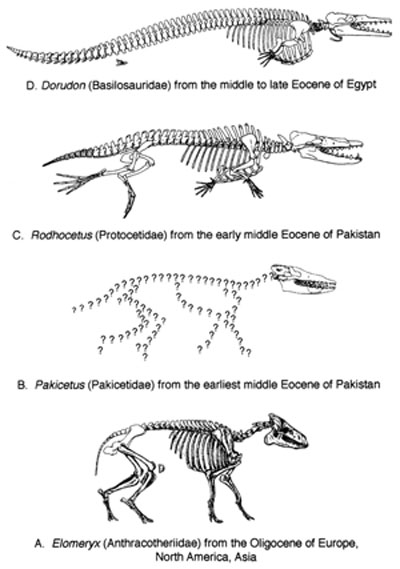 Source: www-personal.umich.edu
Source: www-personal.umich.edu
Do these similarities evolve all at once. Fossils are organized by ____similarities. The final tally came to 379 whales. They probably stuck close to shore and made occasional trips back to the land Gingerich says. Instead they reach for an imaginary not-yet-found ancestor and the precise animal that fills this slot depends on which museum you visit.
 Source: pinterest.com
Source: pinterest.com
They probably stuck close to shore and made occasional trips back to the land Gingerich says. Gingerich argues that Protocetus was completely aquatic and that its lumbocaudal trunk was flexible like that of modern whales. Therefore he assumed that he had found an ancestral whale. He said it is the oldest and most primitive whale yet discovered. The lowerjaw the pelvis the entire skeleton the skull.
 Source: slideplayer.com
Source: slideplayer.com
Teeth as a replacement name. It is an important transitional form linking Paleocene carnivorous land mammals. The lowerjaw the pelvis the entire skeleton the skull. Gingerich named the creature Pakicetus pack-eh-SEA-tus Whale of Pakistan. Sinonyx Pakicetus Ambulocetus none of the above Question 10 1 1 pts How much of Pakicetus has actually been found.
 Source: pinterest.com
Source: pinterest.com
On the PBS program Phillip Gingrich explained how he found the first Pakicetus skull 30 years ago. Living or extinct that have ear bones thickened this way are the whales. Do these similarities evolve all at once. The lowerjaw the pelvis the entire skeleton the skull. Gingerich discovered this creature and named it the whale of Pakistan claiming it was the oldest and most primitive whale yet discovered.
 Source: slideplayer.com
Source: slideplayer.com
Question 9 1 1 pts What did Gingerich name the ancestral whale he found. Question 9 1 1 pts What did Gingerich name the ancestral whale he found. The final tally came to 379 whales. They probably stuck close to shore and made occasional trips back to the land Gingerich says. The lowerjaw the pelvis the entire skeleton the skull.
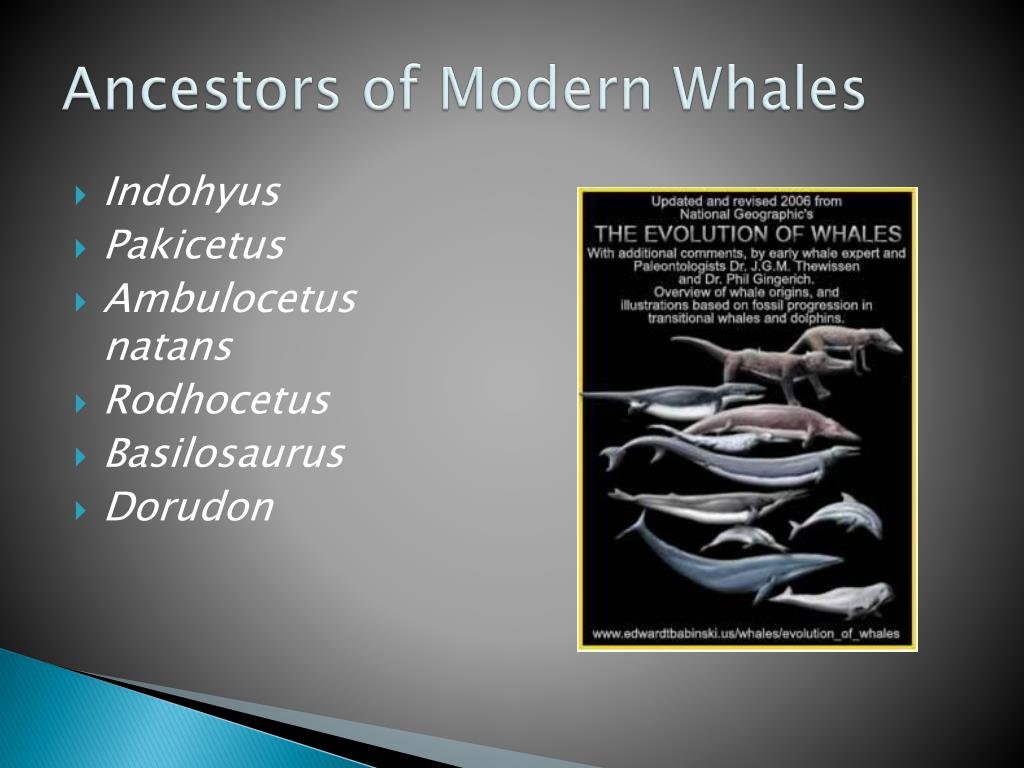 Source: slideserve.com
Source: slideserve.com
It lived about 485 million years ago. Gingerichs excitement turned to disappointment when he found that most of the skeletons were Basilosaurusan already known aquatic whale ancestor. Relationship to whales was codified when Owen 1841 added the specific epithet Zeuglodon cetoides. He said it is the oldest and most primitive whale yet discovered. Gingerich thus concluded that the animal which he named Pakicetus was a very primitive whale–a land-dwelling mammal that nevertheless spent a lot of time in the water.
 Source: slidetodoc.com
Source: slidetodoc.com
In time and in its morphology Gingerich reported Pakicetus is perfectly intermediate a missing link between earlier land mammals and later full-fledged whales. Based on the land mammal-like features of the skull Gingerich hypothesized that this whale probably went into the water to Philip Gingerich searches for ancient. Gingerich thus concluded that the animal which he named Pakicetus was a very primitive whalea land-dwelling mammal that nevertheless spent a lot of time in the water. What did Gingerich name the ancestral whale. 23 Protocetus was found in deep-neritic deposits.
This site is an open community for users to submit their favorite wallpapers on the internet, all images or pictures in this website are for personal wallpaper use only, it is stricly prohibited to use this wallpaper for commercial purposes, if you are the author and find this image is shared without your permission, please kindly raise a DMCA report to Us.
If you find this site value, please support us by sharing this posts to your own social media accounts like Facebook, Instagram and so on or you can also save this blog page with the title what did gingerich name the ancestral whale he found by using Ctrl + D for devices a laptop with a Windows operating system or Command + D for laptops with an Apple operating system. If you use a smartphone, you can also use the drawer menu of the browser you are using. Whether it’s a Windows, Mac, iOS or Android operating system, you will still be able to bookmark this website.